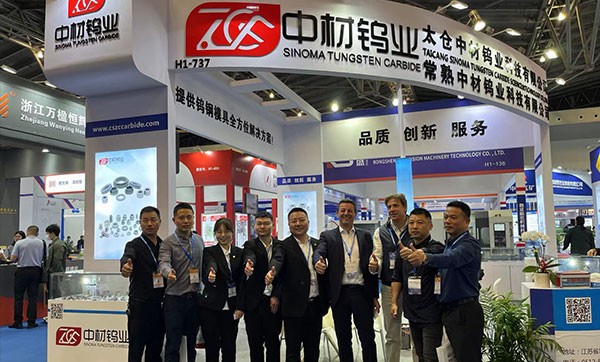Tungsten carbide molds are integral to various high-precision industries due to their exceptional hardness, wear resistance, and durability. However, processing tungsten carbide poses significant challenges due to its inherent hardness and brittleness. To ensure the quality of the final product and maintain safety standards, several precautions must be taken during the processing of tungsten carbide molds. Here’s an in-depth look at these essential precautions.
1. Material Handling and Preparation
-
Contamination Control: Tungsten carbide powder must be handled in a clean environment to avoid contamination. Even small amounts of foreign particles can affect the final product's properties.
-
Proper Storage: Store tungsten carbide powders in airtight containers to prevent oxidation and moisture absorption, which can compromise material integrity.
-
Safe Handling: Utilize protective gear, such as gloves and masks, to prevent inhalation of fine tungsten carbide powders, which can be hazardous to health.
2. Mixing and Milling
-
Controlled Environment: Conduct mixing and milling in a controlled environment to prevent contamination and ensure uniformity.
-
Equipment Maintenance: Regularly maintain and clean milling equipment to prevent cross-contamination from previous batches.
-
Safety Precautions: Use appropriate personal protective equipment (PPE), such as dust masks, goggles, and gloves, to protect workers from exposure to fine particulate matter.
3. Compaction
-
Pressure Monitoring: Carefully monitor and control the pressure during the compaction process to avoid cracking and ensure uniform density.
-
Mold Inspection: Regularly inspect molds used for compaction for wear and damage to prevent defects in the compacted parts.
-
Operator Safety: Ensure that operators are trained in handling high-pressure equipment and follow safety protocols to prevent accidents.
4. Sintering
-
Temperature Control: Precisely control the temperature and atmosphere in the sintering furnace to avoid defects such as porosity or unwanted grain growth.
-
Protective Atmosphere: Use an inert or vacuum atmosphere during sintering to prevent oxidation of the tungsten carbide.
-
Equipment Safety: Ensure that sintering furnaces are equipped with safety features, such as emergency shutoff valves and temperature alarms, to prevent accidents.
5. Hot Isostatic Pressing (HIP)
-
Pressure and Temperature Management: Carefully control both pressure and temperature during the HIP process to achieve optimal densification without causing structural damage.
-
Equipment Inspection: Regularly inspect HIP equipment for signs of wear and ensure it is functioning correctly to avoid catastrophic failures.
-
Worker Protection: Use appropriate PPE and safety protocols to protect workers from the high pressures and temperatures involved in the HIP process.
6. Machining and Grinding
-
Tool Selection: Use diamond-coated or specialized carbide tools designed for machining tungsten carbide to prevent excessive wear and tool breakage.
-
Coolant Use: Employ coolants effectively to dissipate heat generated during machining, which can cause thermal damage to the carbide and tools.
-
Precision and Control: Use precision machinery and maintain tight control over cutting parameters to avoid inducing cracks or other defects.
7. Coating and Surface Treatment
-
Clean Surfaces: Ensure that molds are thoroughly cleaned before applying coatings to promote adhesion and prevent defects.
-
Controlled Environment: Perform coating and surface treatments in controlled environments to maintain quality and consistency.
-
Safety Measures: Utilize proper ventilation and protective equipment to safeguard workers from potentially harmful fumes and chemicals during coating processes.
8. Quality Control
-
Regular Inspections: Conduct regular inspections at each stage of the manufacturing process to identify and rectify defects early.
-
Non-Destructive Testing: Employ non-destructive testing methods, such as ultrasonic or radiographic inspection, to detect internal defects without damaging the parts.
-
Documentation: Maintain detailed records of the manufacturing process, including material batches, process parameters, and inspection results, to ensure traceability and quality control.
Conclusion
The processing of tungsten carbide molds requires meticulous attention to detail and adherence to strict safety and quality protocols. By taking the necessary precautions at each stage of the manufacturing process, manufacturers can produce high-quality tungsten carbide molds that meet the demanding requirements of modern industrial applications. Ensuring the safety of workers and the integrity of the final product is paramount in achieving excellence in tungsten carbide mold manufacturing.




